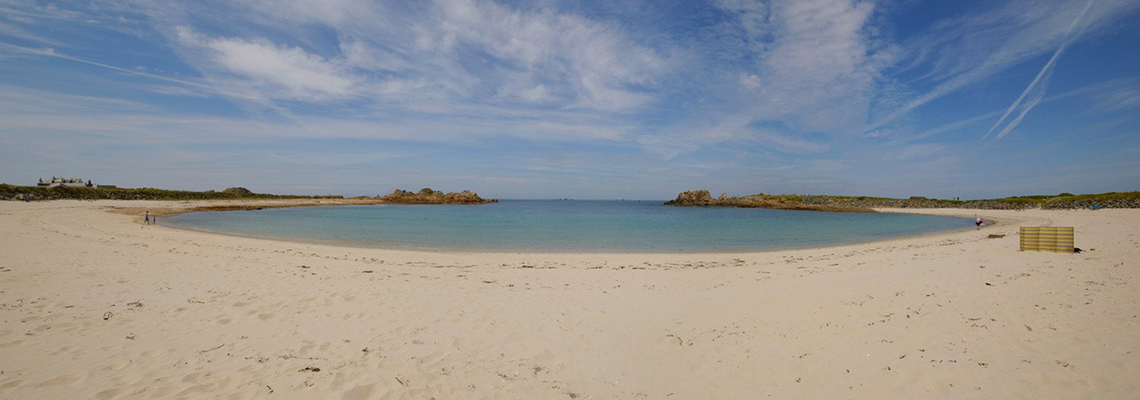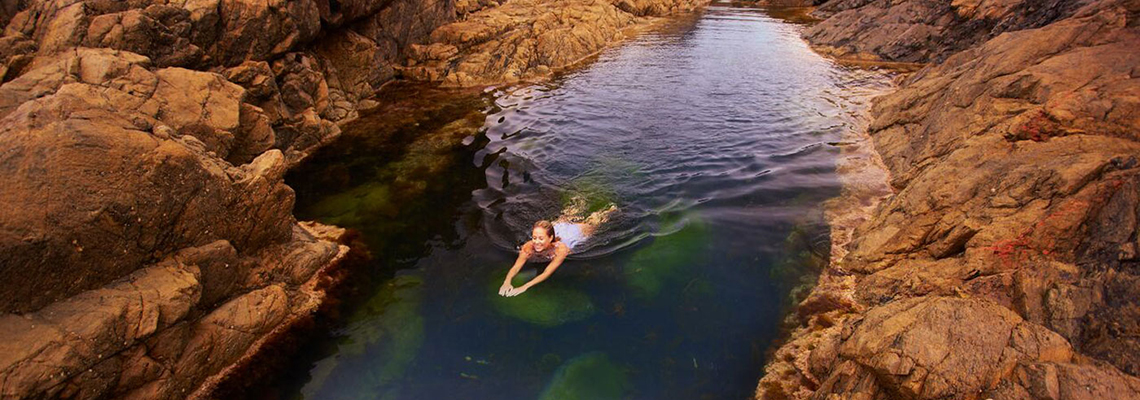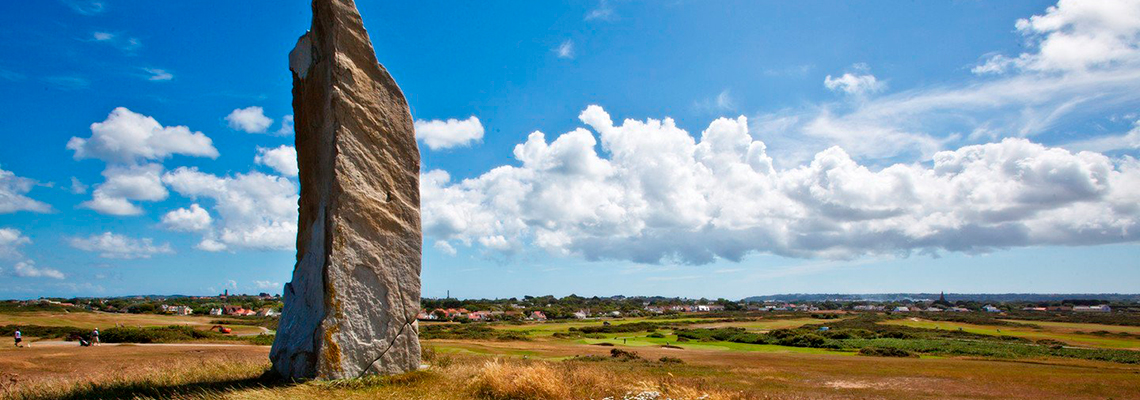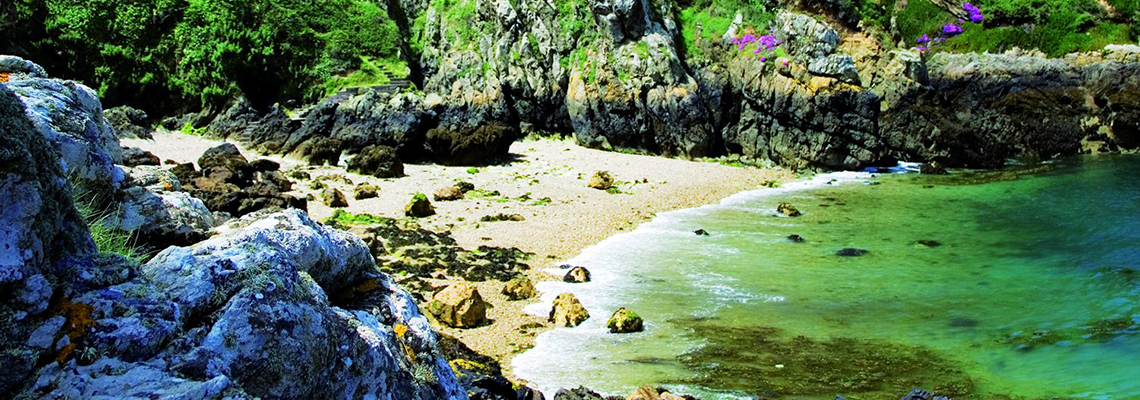All information in this blog post is correct as of the publishing date, 19.08.19.
When on holiday to Guernsey, there are loads of fantastic attractions and activities to occupy every minute you’re awake, from museums to gardens, beaches to forts. You could go island hopping on your Guernsey holidays, to see some less-seen sights around the Bailiwick or delve deeper into Guernsey’s island secrets.
There are loads of wonderful hidden gems that even some of the locals may not have visited before, meaning they are unspoilt and a beautiful place to while away an afternoon. While it is always exciting discovering places on your own when exploring the island, it does help to have a few ideas on where you can go before heading off the footpaths and getting lost! For when you visit Guernsey, we have put together some the quieter places of interest that won’t be teeming with tourists!
‘The Island’ at Port Soif Bay
Guernsey is home to many fantastic beaches, from the popular Cobo Bay with its white sands to the family-friendly Ladies Bay. But not everyone enjoys the big crowds when they have a beach day and prefer to seek out somewhere a little quieter, and on Guernsey, there are plenty of beaches to choose from that provide some peace and quiet.
On the north-west coast of Guernsey, head to the crescent-shaped Port Soif Bay. The sandy beach is not far from St Peter Port and is sheltered by extensive sand dunes, which has made it a prime sunbathing spot for even the windiest summer days. What has made Port Soif Bay truly special are the pink granite rocks which give the place its nickname, ‘The Island’. At the right tide, the area between the granite rocks and sandy beach provide a fantastic swimming area, safe from the strong currents further out to sea.

If you are planning a whole day at Port Soif and are concerned about the need for amenities, don’t worry! There are toilets nearby and a kiosk by the beach selling homemade cakes and freshly sandwiches – the crab ones are a local favourite.
Lihou Island
Lihou Island is one of the better known Guernsey ‘hidden gems’ but what makes it special is that it is a little harder to get to! The island is a quarter of a mile off the west of Guernsey and can only be accessed by foot for two weeks a month when the causeway gets uncovered at low tide. Walking the causeway is free of charge, but you just have to make sure to time your visit carefully so as to not be caught out by the tides. If you want to stay longer, however, there is group accommodation available on the island.

The island has a fascinating history, and there are several interesting places to explore. When you step foot on Lihou, take the path to the left to the ruined priory which dates to the 12th century. The priory was abandoned in the 16th century and was eventually destroyed. The old farmhouse, used for the group accommodation, was used in World War II by the occupying Nazis as a target practice location and has been fully rebuilt. There is evidence that Lihou was once much bigger due to old roads and iron hinges on rocks found three miles out to sea, but that the sea has eroded it to a smaller size.
What attracts people to Lihou Island is the Venus Pool, which can be swum in at half-tide, for around an hour. The island is also a haven for hundreds of nesting birds and exciting marine wildlife. Bird watchers will enjoy spotting plovers and oystercatchers along with peregrine falcons.
L’Ancresse Common
Guernsey’s history dates back thousands of years, and evidence of ancient civilisations can be found all over the island. One of the best-preserved and most impressive sites is Déhus Dolmen. The 10-metre passage grave features the world-famous ‘Le Gardien du Tombeau’ carving. Archeological finds from the tomb date back to 3,500 – 20,000BC, making it one of Guernsey’s oldest attractions!
If you want to discover other megalithic monuments on Guernsey, head to L’Ancresse Common, right by Déhus Dolmen. A large grassy common, it is surrounded by several beaches and features quite a few historic sites! There are fortifications from Napoleonic times, World War II bunkers and most importantly, the prehistoric monuments. They may look like abandoned and oddly placed rocks, but after wandering the common you’ll be able to see the rocks form patterns and shapes.

Other megalithic sites found on the common include La Varde, possibly the largest found on Guernsey. It was rediscovered and excavated in the 19th century, finding bones and pottery jars. La Mare ès Mauves, known locally as The Cromlech, can also be seen on the common. It is made up of various capstones, and the excavated pottery found at the site suggest a very early origin date. But perhaps the most important site on L’Ancresse Common is Les Fouaillages. Over 8,000 years old, the site could have been missed, as it was discovered following an accidental fire. The burial mound is one of the largest man-made monuments in Europe, and thousands of interesting finds were made there, some of which can be seen at the Guernsey Museum – certainly something a little different to a usual history tour of the island!
Marble Bay
Guernsey is famous for the large stretches of unspoilt and sandy beaches, with clear, clean waters that are perfect for swimming. However, not everyone likes to deal with busier waters and prefer a more tranquil swim. If you want to go wild swimming in a secluded bay or tidal pool, seek out Marble Bay.

Also known as Le Pied du Mur, Marble Bay is a rocky cove off the south-west of the island and boasts stunning views towards Sark and Herm. The bay is surrounded by tall cliffs, is long and deep and is one of the lesser-visited beaches on the island due to the difficulty in getting there. But when you do arrive, the blue waters are calm and there is hardly anyone else there to interrupt your swim, so the trek down the steps to the bay is worth it!
Marble Bay doesn’t have any amenities or refreshments within easy distance, so it’s best suited for anyone prepared to carry supplies down the cliff. The nearest kiosk and public toilets can be found at Jerbourg Point carpark, along with Hotel Jerbourg for dining.




